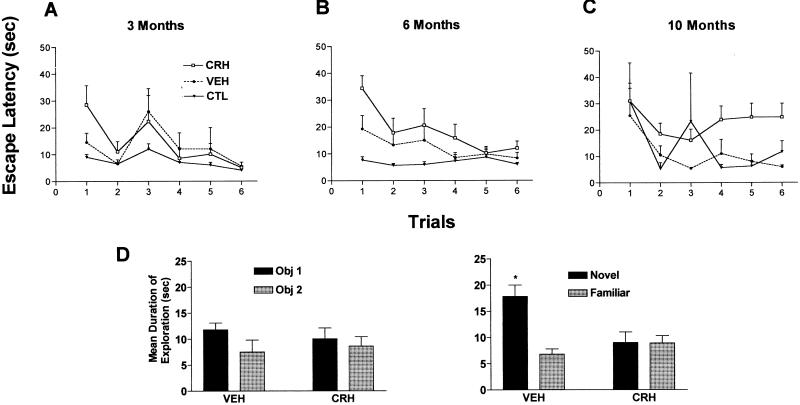Figure 3.
Deficient short-term memory skills in adult rats given CRH centrally early in life. (A) CRH-treated rats show a trend toward impaired performance (increased escape latency) using the MWM at age 3 mo. By 6 (B) and 10 (C) mo, rats treated with CRH early in life take significantly longer to locate the hidden platform (two-way ANOVA, treatment effect at 6 mo: F2,132 = 9.62, P < 0.001; at 10 mo: F2,132 = 5.53, P < 0.01). This deficit is not attributable to injection procedures because latencies of vehicle controls were significantly shorter than those of the CRH-treated group and not significantly different from those of naive controls. Note the progression of the spatial memory acquisition impairment in CRH-treated rats. (D) CRH-treated rats suffer from hippocampus-dependent memory dysfunction also in the nonaversive, nonstressful object recognition test. On day 1, pattern and duration of exploration of two novel objects were indistinguishable in CRH- and vehicle-treated rats. However, 24 h later (day 2), vehicle-treated rats discriminated between familiar and novel objects [remembered the familiar object and explored it for a significantly (*) shorter time; paired t test; P < 0.05], whereas CRH-treated rats did not discern the novel from the familiar object, indicating impairment of short-term recognition memory. n = 6–12 rats per group.

